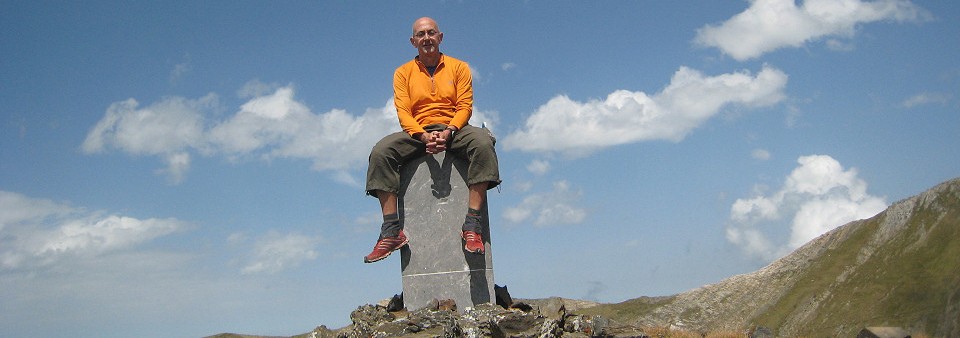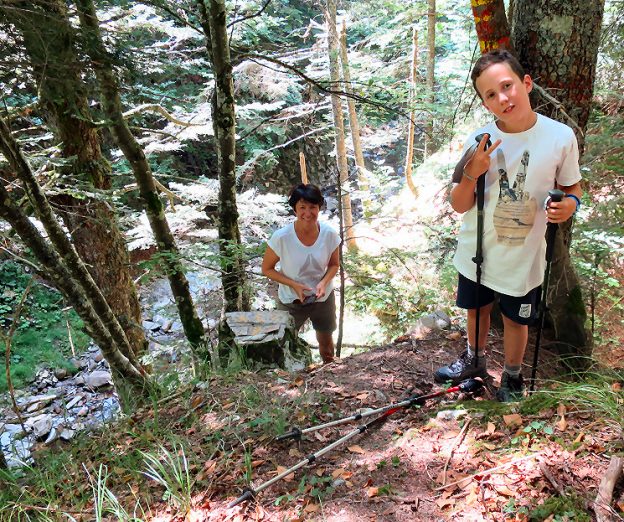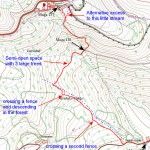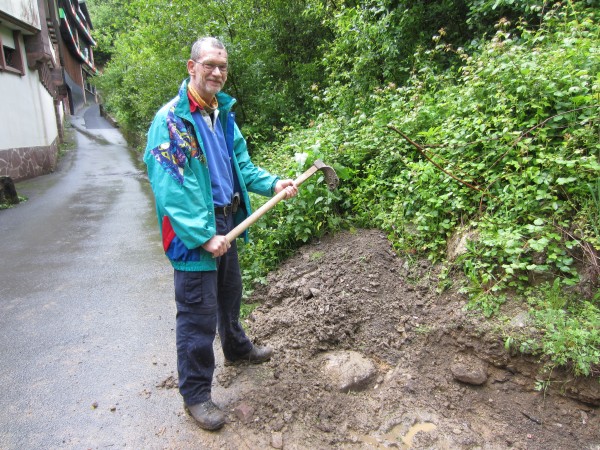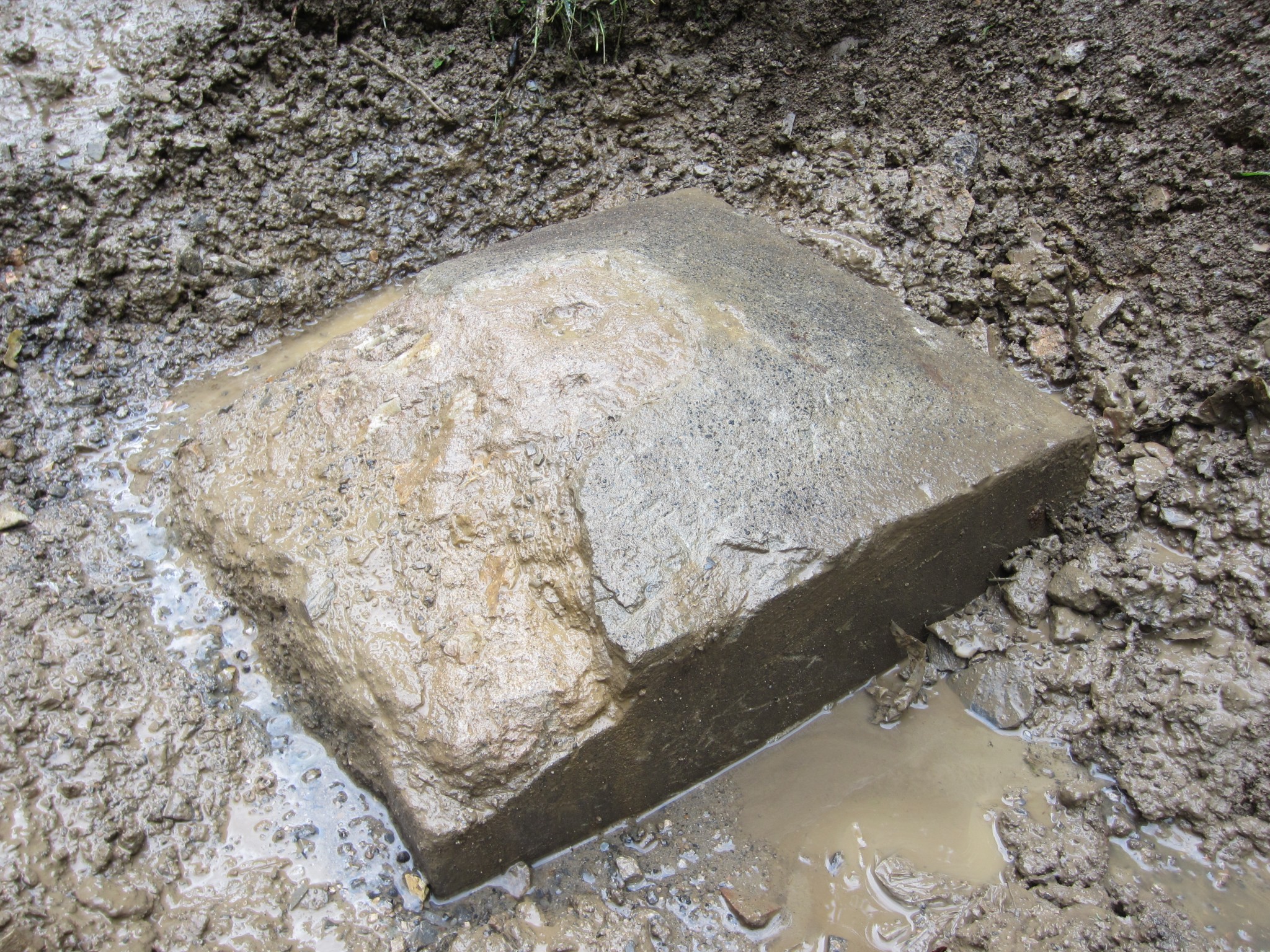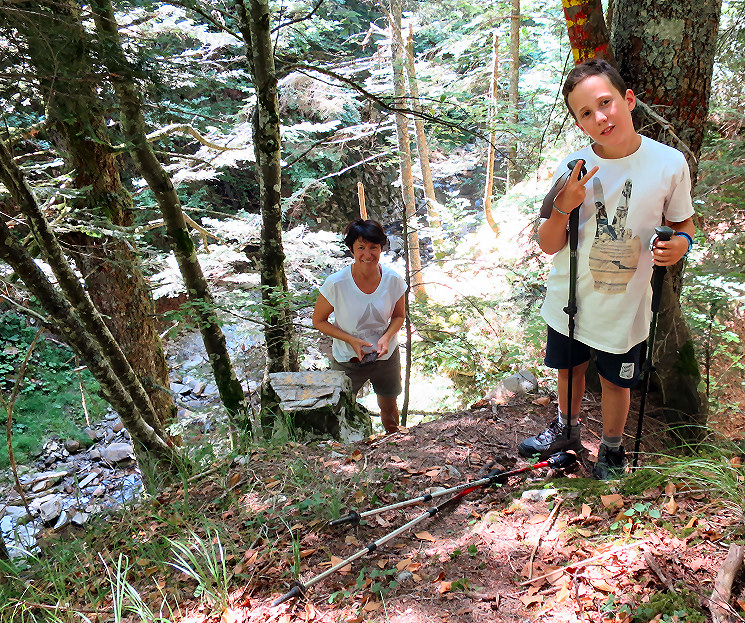
On 24 July 2019, I had a delightful meeting with Corinne Gourgeonnet and her son Arthur. I know Corinne since 2 years and she has impressed me with her enthusiasm in searching the esfr-bordermarkers, making new discoveries and deliberately abstaining from the help of a gps.
But we never met before until today when the four of us – Corinne, her son Arthur, Jan-Willem Doomen and me – traveled to the foothills of Pic d’Orhy to do a bordermarker-trip together. We covered bm232 to 234bis which meant descending into the forest to hidden borderstreams. The young Arthur (10 years old, already famous for his swimming-trip to bm602), liked to take the lead in the approach of the bordermarkers. With the gps in his hand, he guided us towards them. On the picture above, we see him with his mother at bm234.
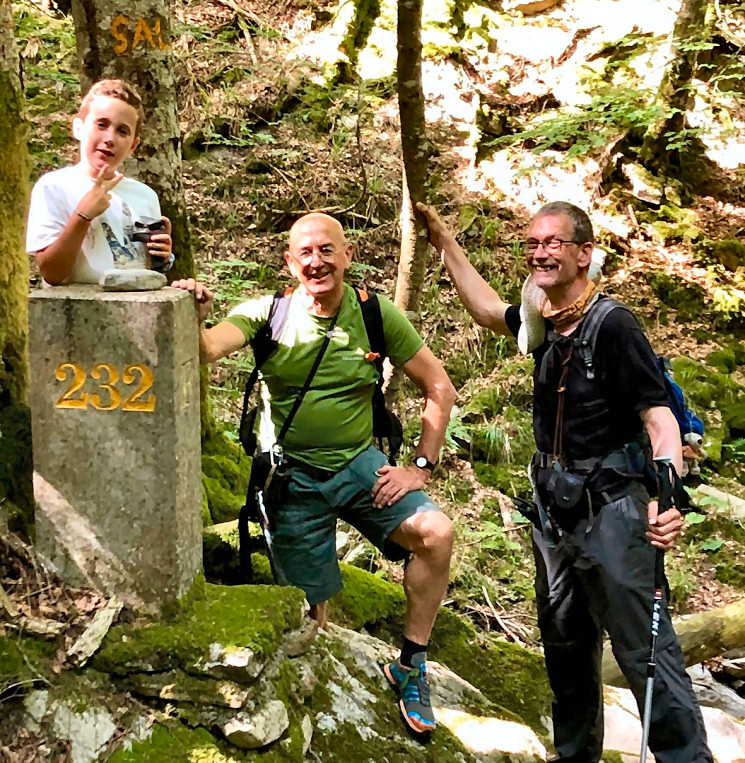
And on this picture, the three men proudly smiling.
